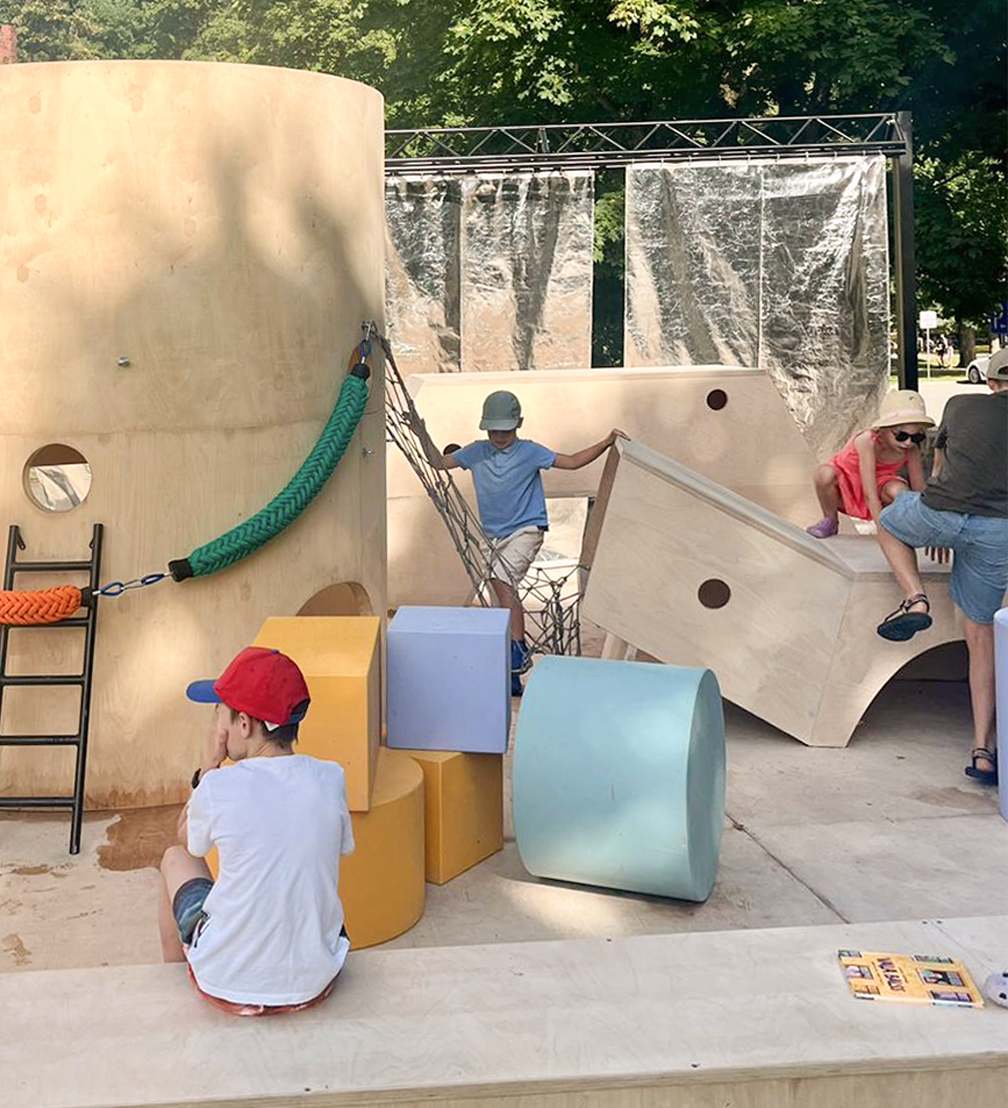
How can different interventions in the city help unleash the freedom and joy we experienced as children, climbing trees or crawling into sheds through a gap in the wall? What do we dare to experience in public space? How much openness or playfulness can a grown-up allow themselves without being written off by others as an inadequate member of society? Liene Jakobsone, project manager of the public art object Play Stage (Rotaļu skatuve), summarises her observations on playing in the urban environment.
I am lucky to be part of the team that created the Play Stage in Valmiera this summer, and below you can read my impressions that have led to a unique public play space in the city, as well as encouraged me to start a new education programme at the Royal Institute of Art in Stockholm, OPI Lab, which explores public space, including how the urban environment can serve us to create personal and communal joy.
All of the events and conversations below have sunk into my head and grown a layer of patina over time, so the quotes are mostly inaccurate but capture the subjective feeling of the moment as captured by memory. I also dare to use the words «game» and «play» freely in the text, knowing full well that a game has rules, while playing does not. Here I invite you to see them as synonyms that embody the happiness that games and play can bring to us all.
Cologne, July 2022
Ludwig Museum, Isamu Noguchi retrospective. Alongside the designer lamps and art objects, I enter a separate room dedicated exclusively to the Playscapes he created. Noguchi is one of the first to develop a new approach to playgrounds as an environment, not as an unquestionable mathematical formula but as a place for experimentation for exploring the surroundings, for complex discoveries, and for miracles that occur if the opportunity allows. And thank god and the mayor of Atlanta for making it possible! In 1976, the Noguchi Art Playground was built in Atlanta, USA, with financial support from the city’s art museum and numerous private donors, and it is still there today in a restored form. In the exhibition space, a five-year-old tries to climb up one of the Playscapes elements. Later, I thought how beautiful it would have been to see this little sculpture in the courtyard of the Soviet microrayon, or, better still, how I could have climbed on it in the museum.
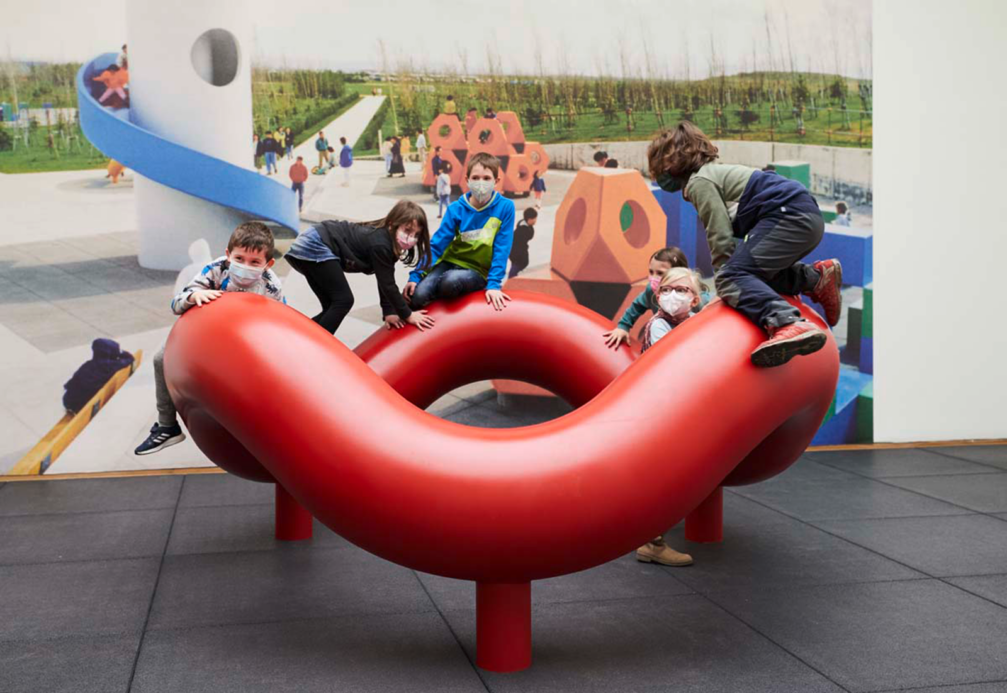
Brussels, October 2023
Wiels Contemporary Art Centre. I’m in Francis Alÿs’ exhibition The Nature of the Game, where a series of astonishing video works capture children playing in public. Children in the Democratic Republic of Congo ride down a sand dune on a giant rubber tire. Children in Denmark try to pass an orange to each other with their foreheads. Children in Afghanistan fly a kite; it gets tangled up, falls, then flies back up again, ad infinitum. The screens in the exhibition fill the large space, and visitors can roll around in small wheeled chairs as the entire exhibition is designed at a height accessible to a primary school-age child. Each game has its own rules, each is a set of small connections, a careful and meaningful system of details that brings visitors closer to the protagonists of the work — children from different cultures who are united by the joy of play. The people who enter the room, depressed by the autumn fog, leave radiant and happy. Although leaving is particularly difficult, the organised chaos of the exhibition makes us all circle the room for as long as possible. Nothing entices us to return to a world where there is no play.
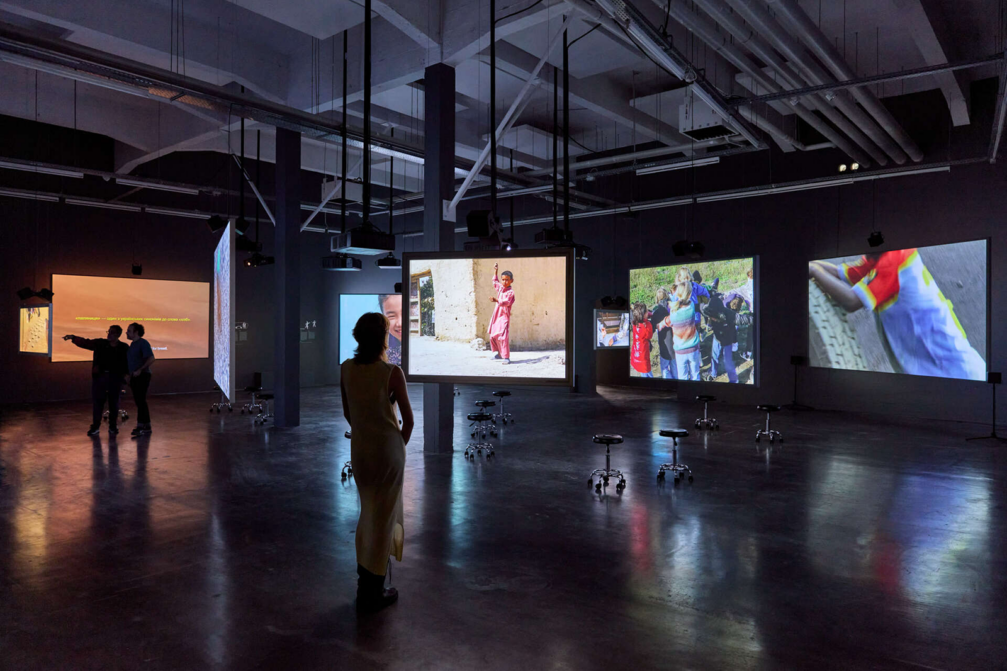
Valmiera, March 2024
Together with project curator Renāte, artist Linda, and the city architect, we take a look at the square adjacent to the Valmieras Kurtuve, where the public art object Playground Stage will be located in a few months. We have agreed on the creation of the object and the start of work, not yet realising how complicated it will be, both in terms of funding and safety considerations. Caring for children, we are trying to balance safety expectations in all departments and to find middle ground that complies with Cabinet of Ministers Regulation No. 18. After a long and tortuous coordination process, we agree that we will not use the word «playground» but «environmental installation» in the public domain. Otherwise, we will not be able to move forward freely. Shortly after the first announcement to close the plain courtyard of Kurtuve, we hear: «Where else to put the car?» and «What are you going to have here — some art? Go indoors, there’s enough space!» These opinions only reaffirm our chosen course to dismantle the fence and free up the space adjacent to Kurtuve for play.
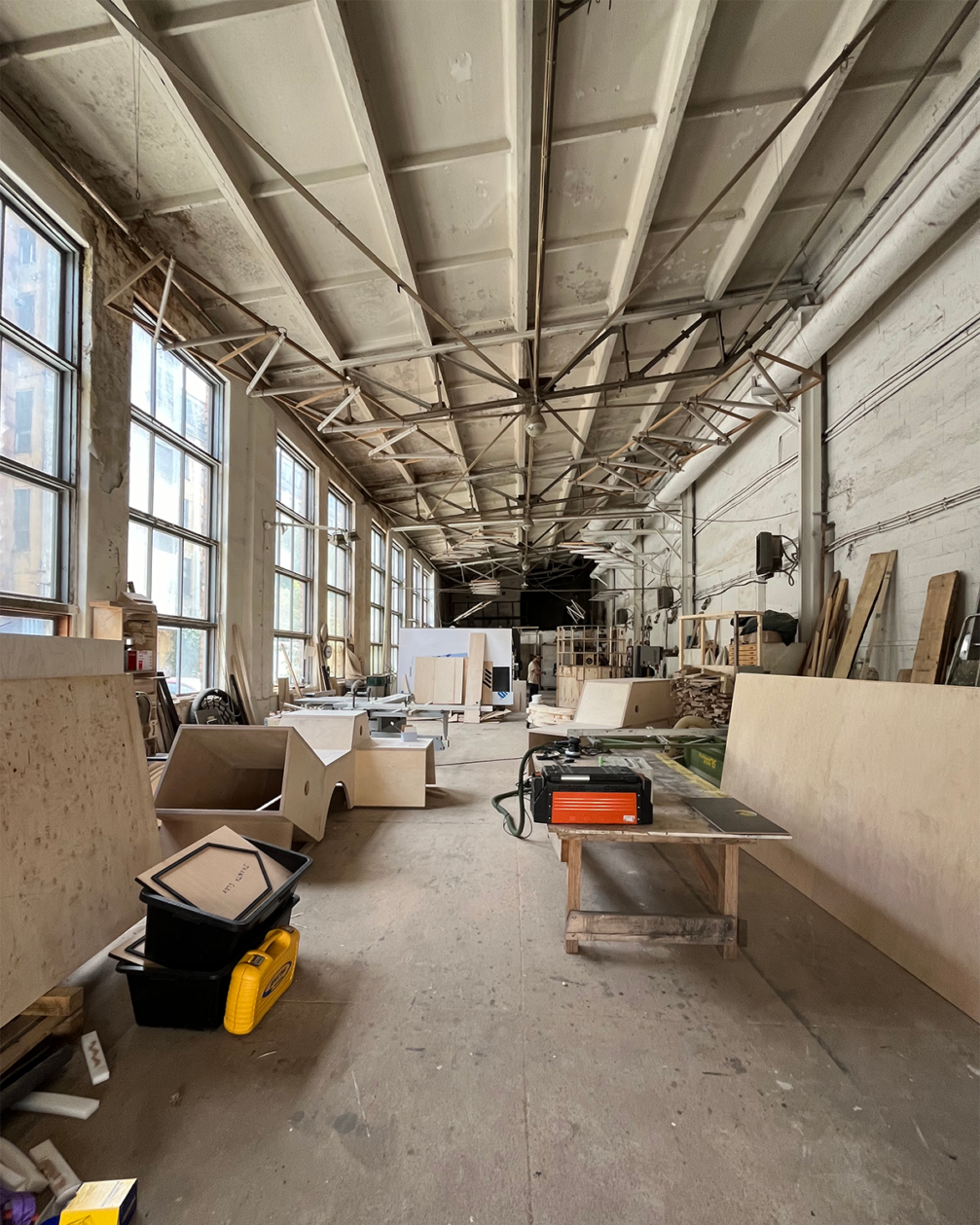
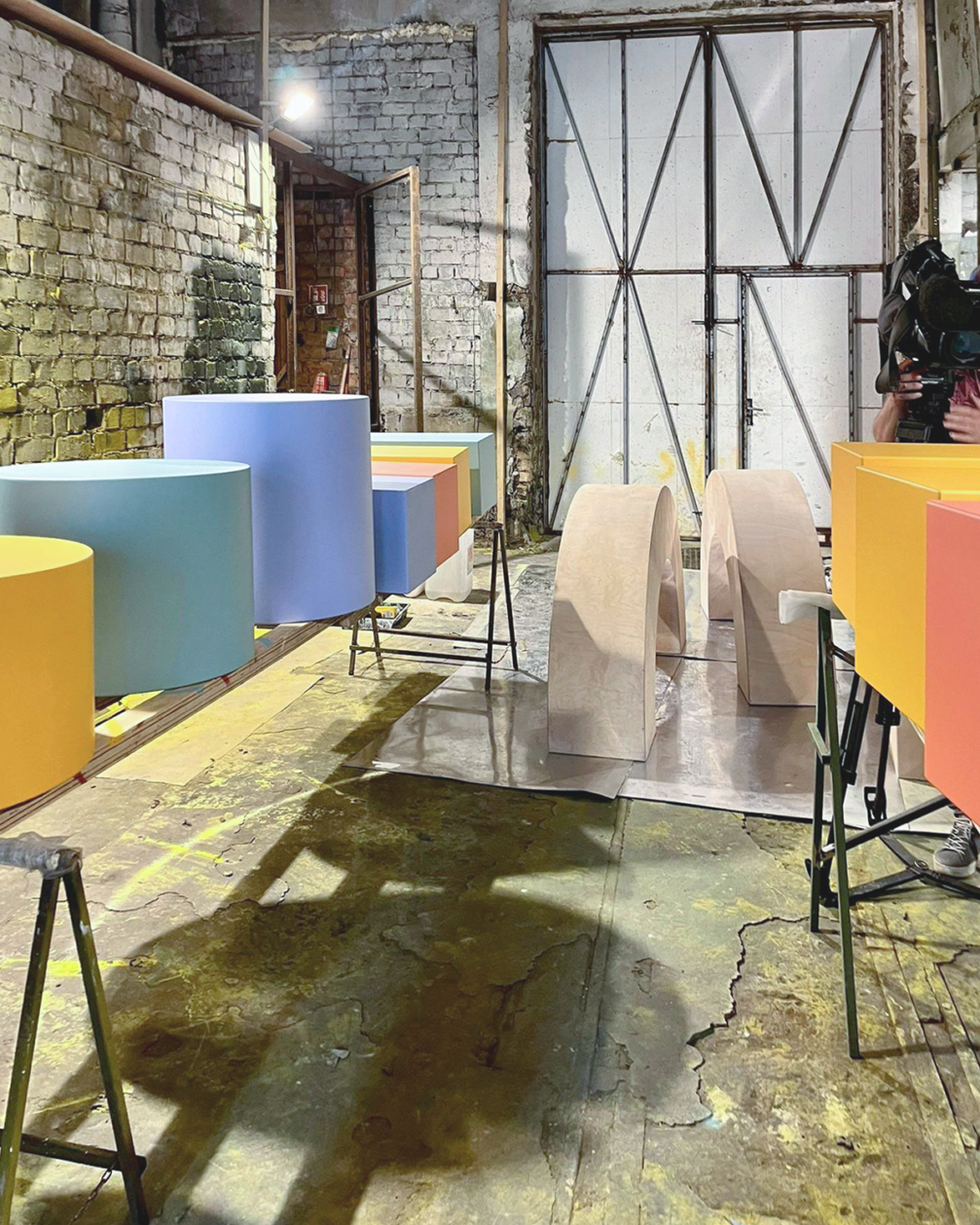
Valmiera, April 2024
Renāte enthusiastically talks about the Theory of Loose Parts by architect Simon Nicholson. How important it is for children to play with objects whose function cannot be clearly defined. How important it is to climb on it, move it, put it together, build houses, caves, tunnels, and, finally, how such play awakens creativity in children and is very healthy in all shapes and forms. In the Play Stage, children will be given the opportunity to push, pull, move, scramble, act, and build their own city. The idea is so beautiful and powerful that I am a little envious of the children who will have the opportunity to fill this space.
Riga, August 2024
Children have been injured in the environmental installation in the Dome Square, which is being adapted by removing the swing elements. The Consumer Rights Protection Centre reports that all environmental objects in the city will be subject to safety inspections in the future. Shortly after the incident, it was rumoured that all environmental objects placed in urban areas would be assessed through a safety sieve. Meanwhile, Berlin is hosting an exhibition of experimental playgrounds entitled Radical Playgrounds: From Competition to Collaboration, where children pound nails with a hammer and run down a ramp held up by an upside-down car. They play happily, unaware of Regulation No. 18 of the Cabinet of Ministers of the Republic of Latvia.
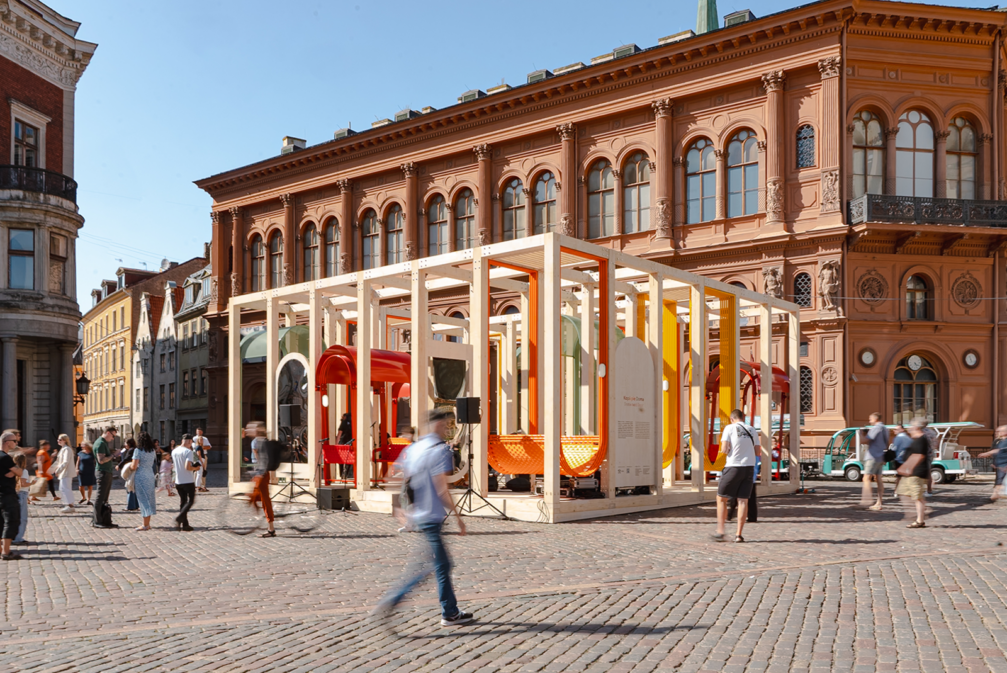
Stockholm, September 2024
On the first morning of our studies, each of us is given a golden trumpet — a toy musical instrument that loudly announces your presence when you blow into it. It comes with two sheets of music — a short and a long blow — and a map that asks everyone to position themselves within a two-kilometre radius. The only task is to go to the designated place and blow for the duration indicated on the sheet. My location is near a kindergarten, and all I want to do is run away, sink into the ground, or otherwise disappear from the game, but gradually there are grating sounds coming from all corners, all part of a «symphony». A girl with a dog walks by and asks what I am doing. I start to panic and answer that I am testing the acoustics of the place. The girl smiles, walks away, and I blow the horn three more times. As it turns out later, three of us struggled with social shame during the exercise, while the other twelve «had so much fun!». For the rest of the week, I wondered what had kept me from having fun in the city and how easy it was to become a hostage to the rules of the Cabinet of Ministers of the Republic of Latvia.
Valmiera, September 2024
The Play Stage is marked with coloured hearts, and there is a problem with teenagers regularly barricading themselves in one of the play elements and smoking vapes. They also smoke them behind the thick curtains because they cannot be seen from the street. Meanwhile, in the green area of the installation, people come to eat, read a book, or just lie down and relax during their lunch breaks. Emails flood in from children’s mothers saying that the site needs cleaning because people drop papers and bottles in the green area. Finally, one morning, the play element is broken, and there are other suggestive signs of a night of passion. The unassuming car park has come to life and has become a kind of manifesto of freedom, inviting everyone to play at the height of their personal imagination.
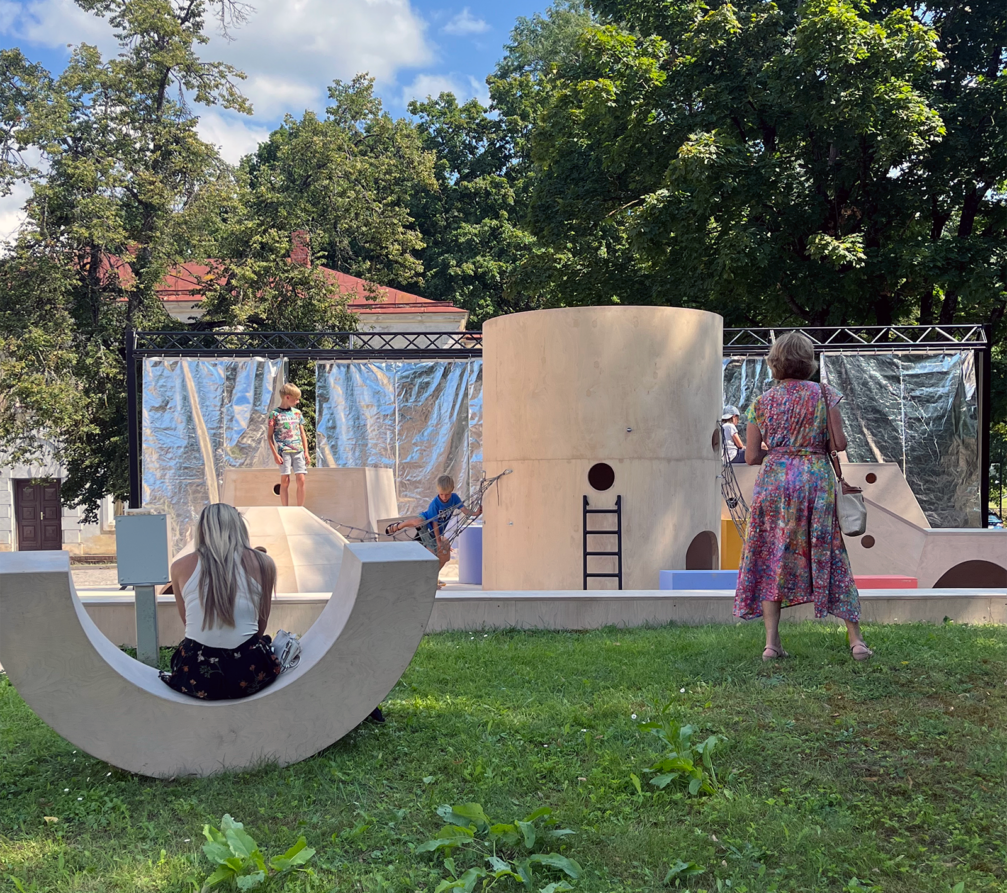
Public space has a huge capacity to develop or kill creativity, and thinking about it with sensitivity is a skill that needs to be developed. This past summer proved that the most ordinary car park can be a playground. A purple 1 m by 1 m block can serve as the foundation of a house. A shrieking toy trumpet can create symphonies in parks, streets, and backyards. And if I’ve gone this far, nothing really prevents me as a grown woman from climbing on a Noguchi’s play sculpture. I would probably be kicked off it, but then I would wholeheartedly take the opportunity to insist on my right to enthusiastic play.

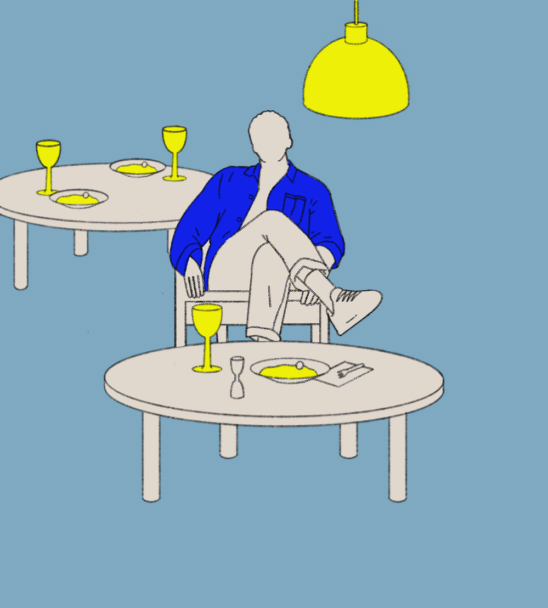
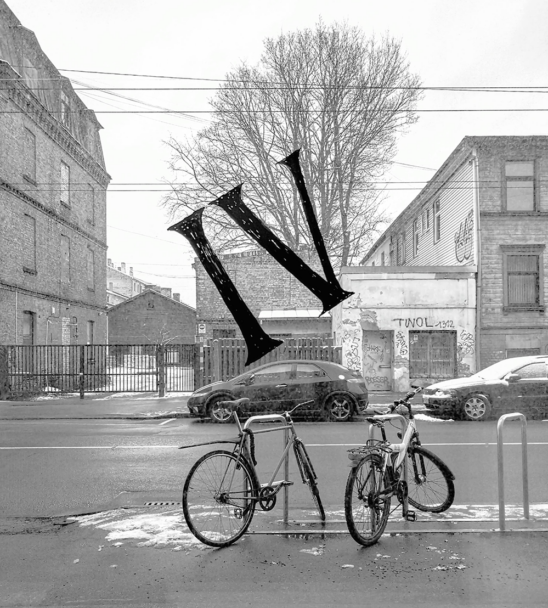
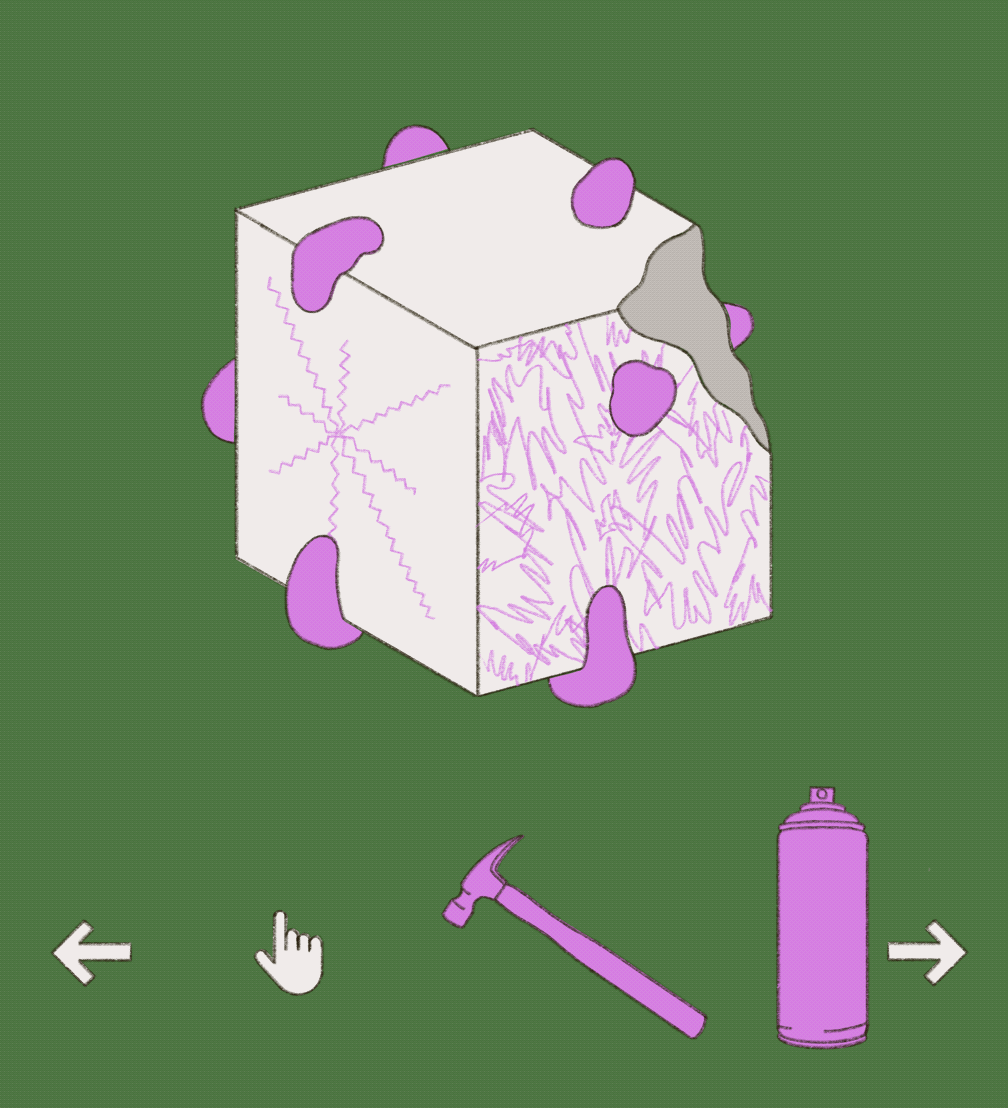
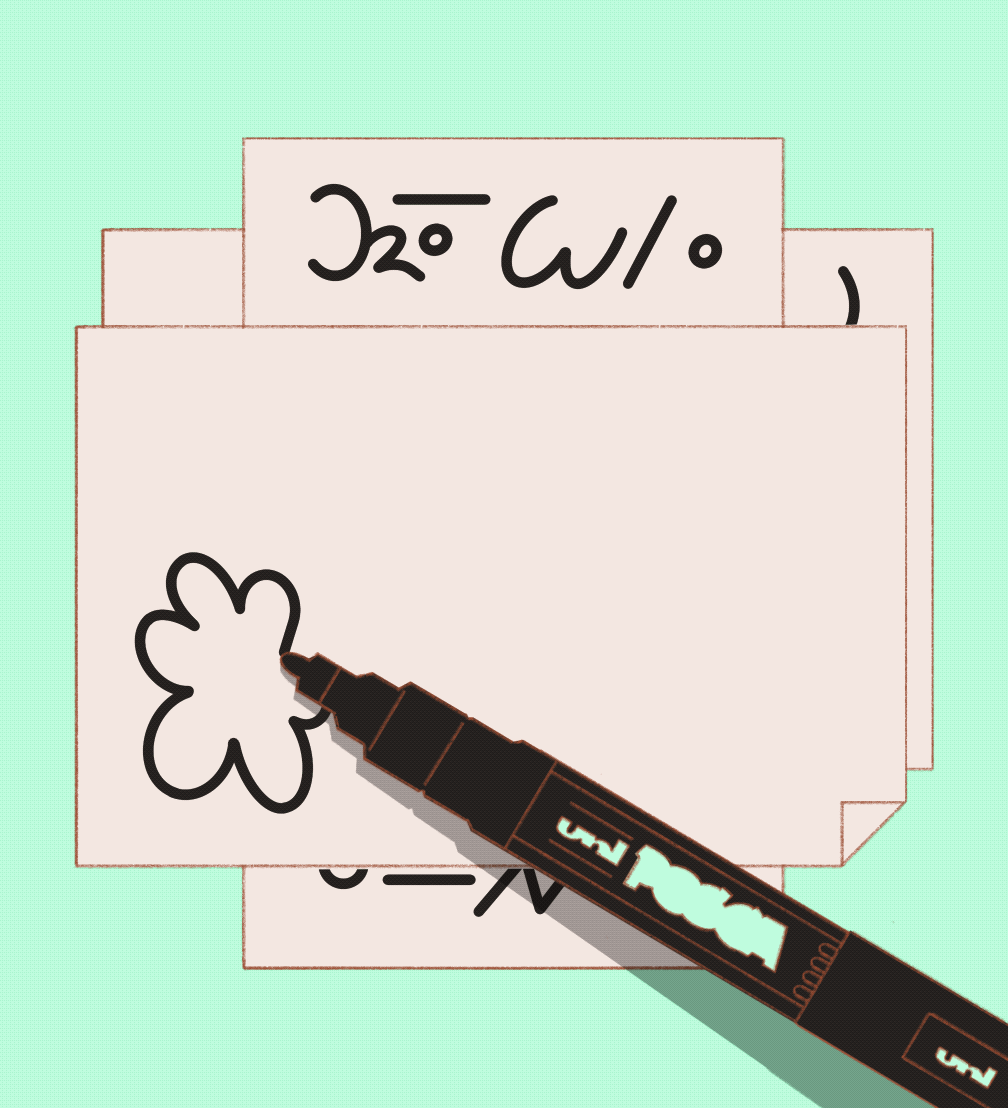
Viedokļi